World's most important private collection of ancient Roman art to go on display for first time
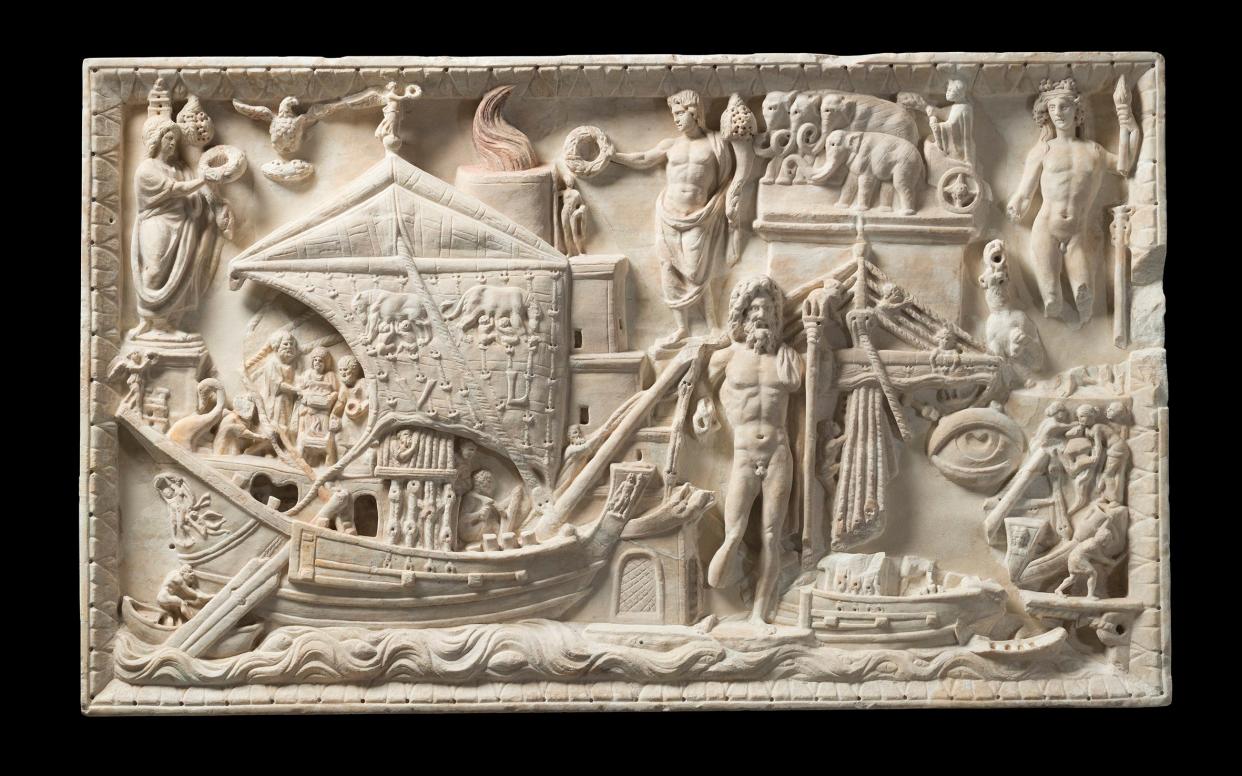
A giant marble statue of the god of the Nile reclines on a stone plinth, a fierce crocodile snapping at his heels and a sphinx at his elbow.
A few yards away there is a statue of Hercules holding a club, his shoulder draped with a lion’s pelt, and nearby a perfectly preserved bust of the lunatic emperor Commodus.
For centuries, these and around 620 other treasures have been kept behind closed doors.
They constitute a priceless collection of ancient Roman statuary that was amassed by Italy’s aristocratic Torlonia family, either during excavations on the many estates they owned or after being purchased from other blue-blooded dynasties.
Accessible only to a chosen few, the collection was so little known that it became the stuff of legend. Even scholars knew it only from its catalogue, which was compiled in 1884.
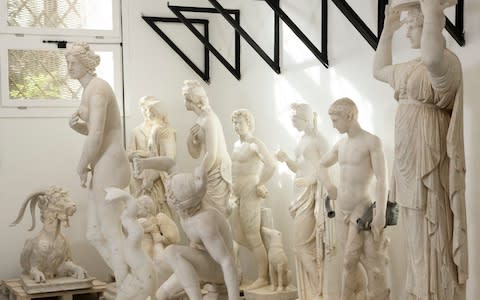
But part of the Torlonia Collection, billed as the most important array of ancient art in the world, is soon to be seen by the outside world for the first time in its history.
Nearly 100 of the most outstanding classical statues, busts, sculptures and reliefs from the fifth century BC to the fourth century AD will go on display in a palazzo on Rome’s historic Capitoline Hill in April.
The exhibition, called The Torlonia Marbles, has been curated by one of Italy’s leading archeologists and art historians, Salvatore Settis, a former director of the Getty Research Institute in Los Angeles.
It will last until January 2021 before embarking on a world tour of prestigious museums, the names of which have yet to be announced. After that, there are hopes of establishing a permanent museum in Rome.
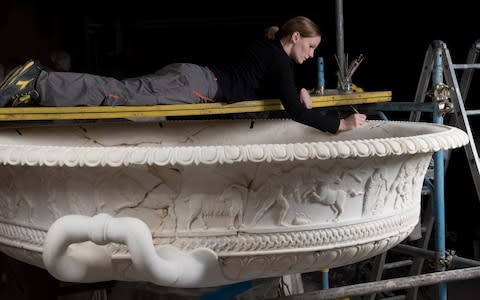
“The 96 objects have been chosen for their quality but also for their history,” said Carlotta Loverini Botta of the Torlonia Foundation, which manages the collection.
“There are statues of Apollo and Aphrodite, satyrs and a wonderful collection of busts of Roman emperors, including Hadrian, Commodus, Vespasian and Scipio Africanus.”
The restoration, which has so far lasted three years and is still ongoing, has been funded by the Bulgari jewelry company.
For now, the pieces are kept in a former granary a few hundred yards from the banks of the Tiber in central Rome, where they have languished since being gathered together in 1875. Here they are being cleaned and restored by a diligent team of experts.
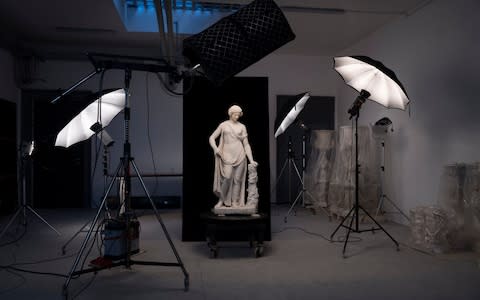
Those that have already been restored are pristine white and lie beneath the ghostly shrouds of plastic sheeting.
Those that the team have yet to turn to are nicotine brown, still covered with a patina of dust and dirt.
One of the highlights of the collection is a stone relief, about 4ft wide and 3ft high, which depicts a busy scene at Portus, ancient Rome’s port on the Tyrrhenian coast.
It was dug up on a Torlonia property built on the remains of the vast port, where everything from amphorae of wine and olive oil to sacks of grain and exotic wild animals were unloaded to feed the imperial capital.
A large transport ship approaches the docks, its twin sails decorated with images of Rome’s legendary she-wolf suckling the twins Romulus and Remus.
Four nervous-looking elephants are being unloaded – fresh fodder for the games at the Colosseum, perhaps – while the god Neptune holds a trident next to a giant eye that the Romans hoped would ward off evil and misfortune.
The tableau not only pulsates with life, it also bears remnants of the coloured paint that would once have adorned it.
“When we removed all the dirt and calcium deposits we found a great variety of colours, from red on the flame that burns at the top of the lighthouse to specks of blue on the waves,” said Anna Maria Carruba, a member of the restoration team. “It’s rare to find colour because it either fades or has been scrubbed off during earlier restorations.”
Restorers use a wide range of tools and techniques to remove the centuries of grime, from metal scalpels and lasers to solvents, sponges and ultra-sound machines.
The exhibition is the culmination of years of negotiations between the Torlonia family and the Italian authorities.
The idea of putting the collection on display came from Prince Alessandro Torlonia, a descendant of the nobles who amassed it in the first place.
He died in 2017, but not before reaching an agreement with the culture minister, Dario Franceschini, to make the works of art available.
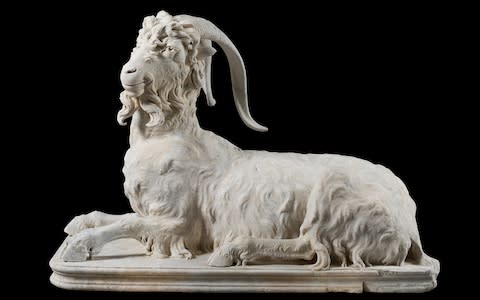
It takes the restorers on average one month to clean and restore a single statue. More intricate works take more time – the stone relief of the harbour scene at Portus took nearly six months of work.
While many of the statues are intact and in the same state as when they were created 2,000 years ago, some have been damaged over the years – chipped noses and broken hands have been repaired with other bits of marble.
A life-size marble goat has its original ancient Roman body but a head and horns believed to have been carved by the great Baroque sculptor Gian Lorenzo Bernini.
“It would probably have formed part of a bucolic scene,” said Dr Carruba. “The face is so expressive, it looks as if it could talk.”

